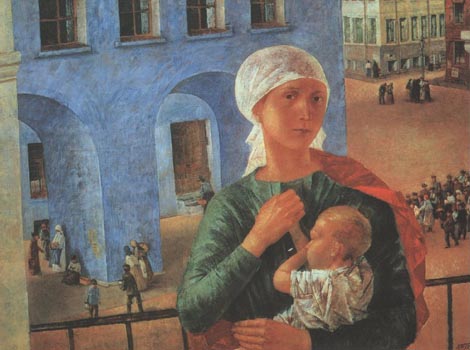 The mother understands even what the children do not say.
The mother understands even what the children do not say.
(Hasidic maximum)
The bond between mother and child is strong. Saying it is banal, redundant, overcoming this bond almost all affective or biological relationships.
Published less than a week ago, scientific research revealed that children's DNA sometimes invades their mother's brain cells. This biological phenomenon has long been known to occur in various organs, in the liver for example, but has never been quantified in brain cells.
The results presented in the journal PloS One (1) indicated the presence of male genetic material in the brains of the respective mothers. DNA circulated from male offspring to the maternal body, in a phenomenon called fetal microchimerism.
59 brains were autopsied in this study, revealing that 37 of the mothers (63%) had a gene specific to their child. Mothers “contaminated” with offspring DNA also had little evidence of neurological diseases such as Alzheimer's. For one of the authors of this study, William Burlingham, there is still no explanation for this correlation between the presence of the child's DNA and the absence of neurological alterations (2).
How was the DNA of the children identified in the brain of the mothers?
The most practical method of identifying DNA foreign to the mother involved locating the DYS14 gene on the Y chromosome, since only males have this chromosome, thus facilitating the discovery of genetic material other than the mother's. This method does not rule out the hypothesis that female DNA has the same type of migration into the mother's brain, it only facilitates the identification of DNA of male origin for now.
Fetal microchimerrism
Fetal microchimerism is the biological phenomenon in which there is a transfer of genetic material (DNA) between two individuals, with transfer between mother and fetus or even between twins during pregnancy being previously known. Also known were the exchanges of genetic material between non-twin siblings since there is circulating, in the mother's body, DNA from an older sibling and that, eventually, it will pass to the younger sibling.
The longevity of this foreign DNA in the mother's body can even reach 27 years after pregnancy (3). The diffusion of DNA between individuals is associated with the development of some autoimmune diseases such as systemic lupus erythematosus or rheumatic diseases.
The now published results of this type of fetal microchimerism are not unsurprising, but above all raise many biological questions, such as:
What role does the child's DNA play in the mother's brain?
What is the relationship between the presence of that DNA in different amounts in different areas of the maternal brain?
What is the interpretation for the positive correlation between the amount of filial DNA and the lower probability that the mother will develop Alzheimer's?
In addition to these biological issues, I am also impressed by the emotional value of this phenomenon. To the affective charge that binds mother and child is now added a connection that extends to the brain cells, source of all emotions and thoughts.
Mother is mother. And more so with the children's DNA.
REFERENCES:
(1) Chan WFN, Gurnot C, Montine TJ, Sonnen JA, Guthrie KA, et al. (2012) Male Microchimerism in the Human Female Brain. PLoS ONE 7(9): e45592. doi:10.1371/journal.pone.0045592
http://www.plosone.org/article/info%3Adoi%2F10.1371%2Fjournal.pone.0045592
(2) http://www.the-scientist.com/?articles.view/articleNo/32678/title/Swapping-DNA-in-the-Womb/
(3) Bianchi DW, Zickwolf GK, Weil GJ, Sylvester S, DeMaria MA (1996) Male fetal progenitor cells persist in maternal blood for as long as 27 years postpartum. Proc Natl Acad Sci USA 93: 705–708. doi: 10.1073/pnas.93.2.705.
http://www.ncbi.nlm.nih.gov/pmc/articles/PMC40117/
IMAGE: “Petrograd Madonna” by Kuzma Petrov-Vodkin (1878-1939)
 Author Luis Azevedo Rodrigues is a professor, doctorate in Paleontology, science disseminator and coordinator of the Algarve Live Science Centres. He is also the author of the blog Science in the Natural
Author Luis Azevedo Rodrigues is a professor, doctorate in Paleontology, science disseminator and coordinator of the Algarve Live Science Centres. He is also the author of the blog Science in the Natural


















Comments